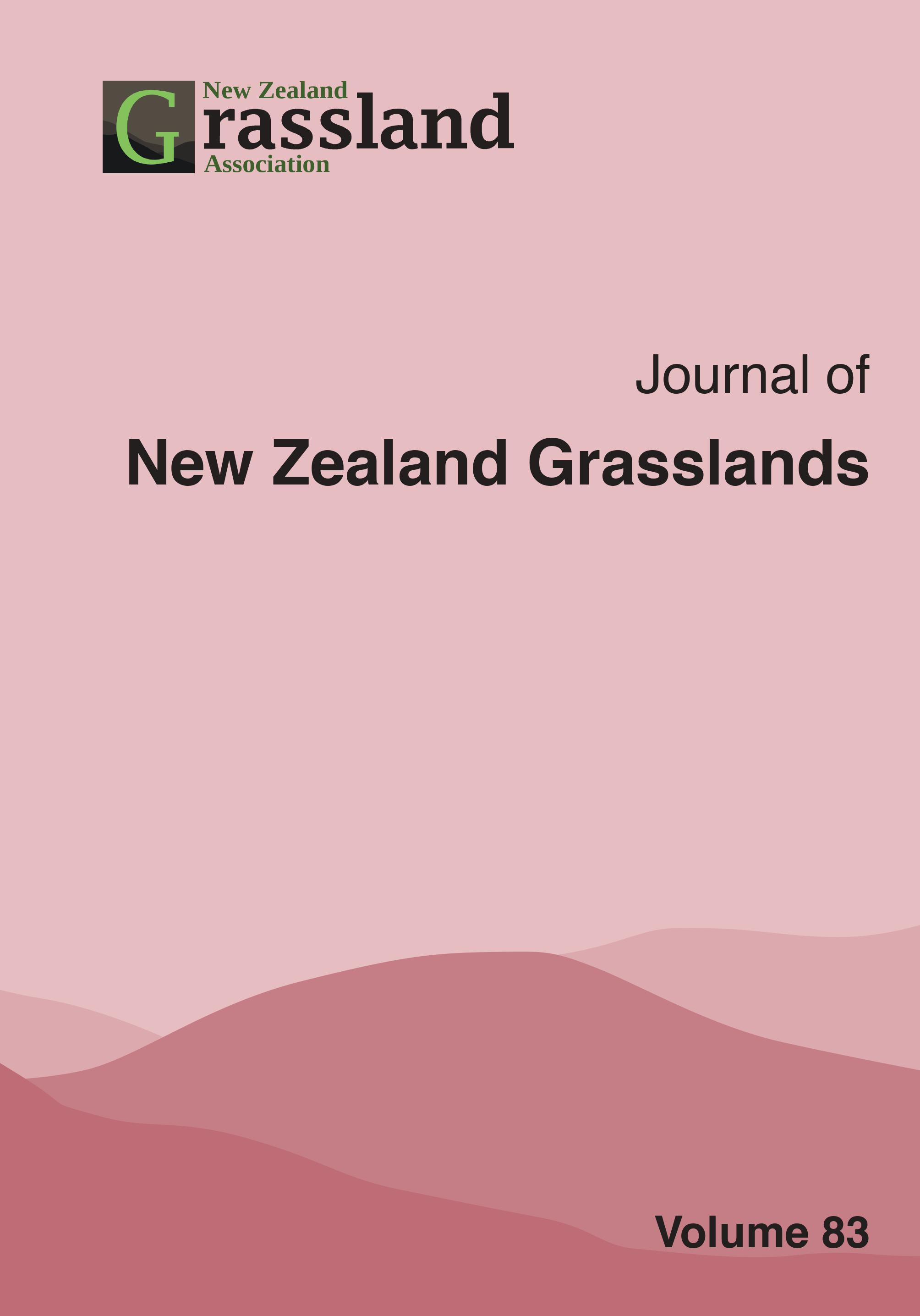Progress towards delivering high metabolisable energy ryegrass
DOI:
https://doi.org/10.33584/jnzg.2021.83.3493Abstract
A method developed at AgResearch to increase leaf fatty acids (FA) and plant growth called ‘High metabolizable energy’ (‘HME’) could elevate the nutritional quality and productivity of perennial ryegrass-based pastures. The industry strategy has been to perform HME ryegrass field trials offshore to test whether the herbage FA, gross energy (GE) and yield enhancing traits observed in containment translate into field swards. To complement the field testing programme, we have also characterised the growth and nutritional profile of HME miniswards under simulated grazing in containment. The results from one such trial are presented. The major changes measured in HME miniswards; increased FA (+0.8–1.4 %DW), increased GE (+0.3–0.5 MJ/kgDM), and generally similar herbage DW production, closely mirror data from field trials with hemizygous HME populations in the Midwest USA. Changes in other HME nutritional components were generally minor, although WSC was reduced late in the diurnal cycle. Secondary effects of HME on photosynthesis appear to be diminished in swards, suggesting that HME yield benefits may be limited to specific environment and management scenarios. The primary benefit of HME technology is thus expected to come from increasing the energy density of pasture, and animal feeding trials using homozygous HME material are now required.
Downloads
Downloads
Published
How to Cite
License

This work is licensed under a Creative Commons Attribution-ShareAlike 4.0 International License.
Copyright
This work is licensed under a Creative Commons Attribution-Non Commercial-NoDerivatives 4.0 International License. Rights granted to the New Zealand Grassland Association through this agreement are non-exclusive. You are free to publish the work(s) elsewhere and no ownership is assumed by the NZGA when storing or curating an electronic version of the work(s). The author(s) will receive no monetary return from the Association for the use of material contained in the manuscript. If I am one of several co-authors, I hereby confirm that I am authorized by my co-authors to grant this Licence as their agent on their behalf. For the avoidance of doubt, this includes the rights to supply the article in electronic and online forms and systems.




